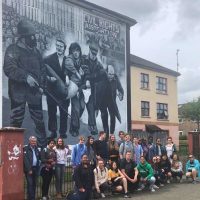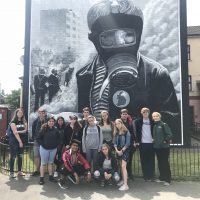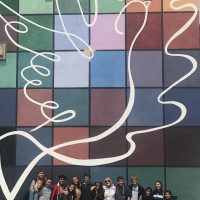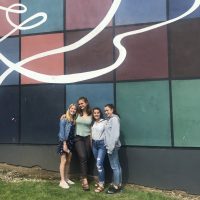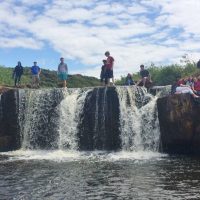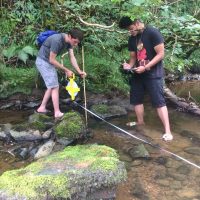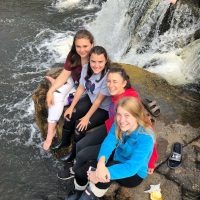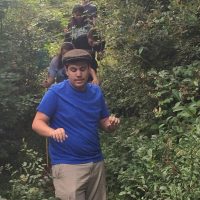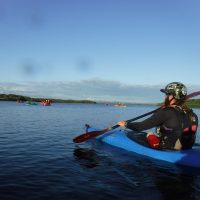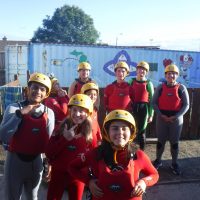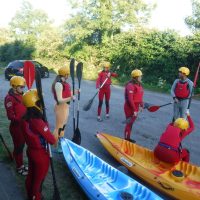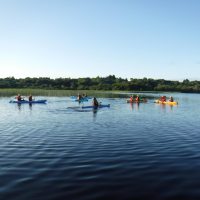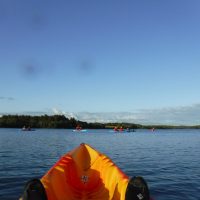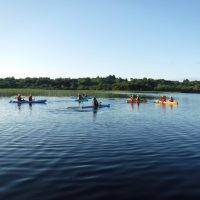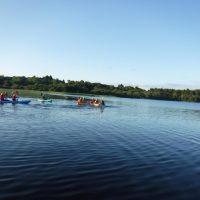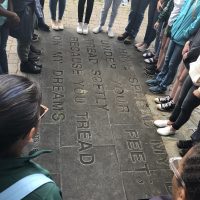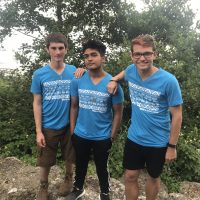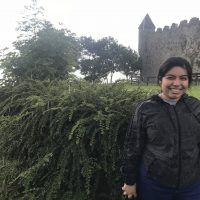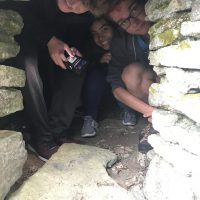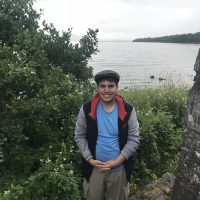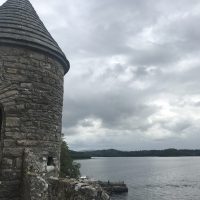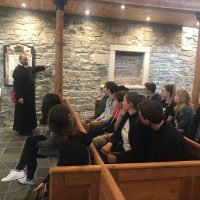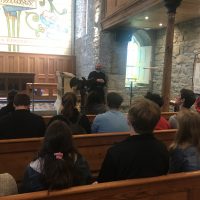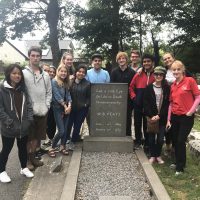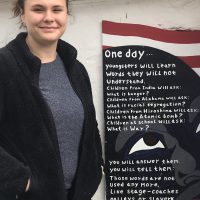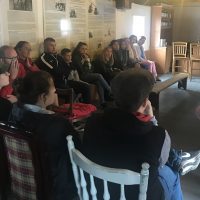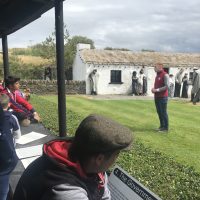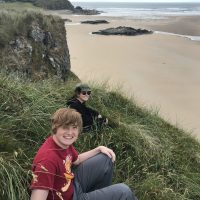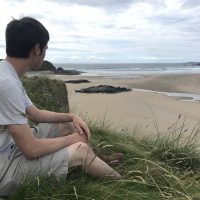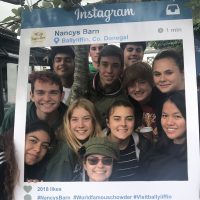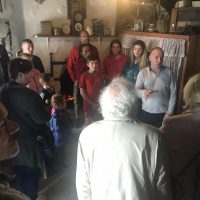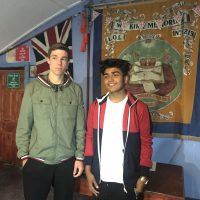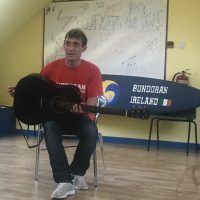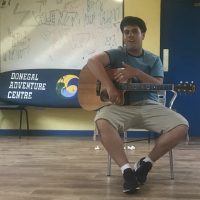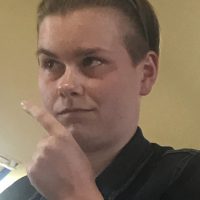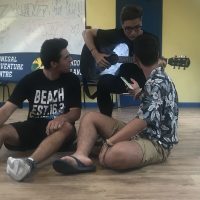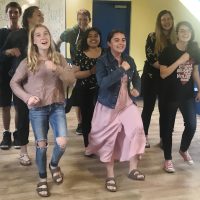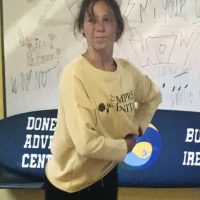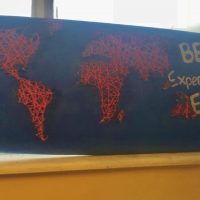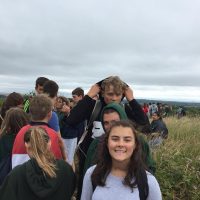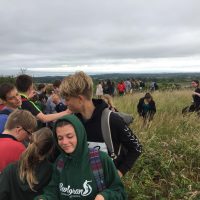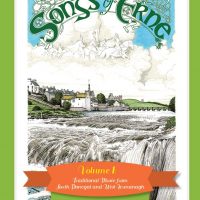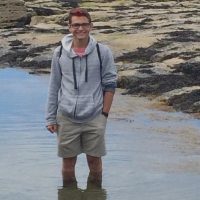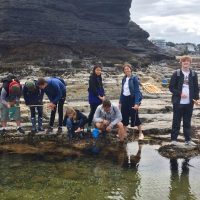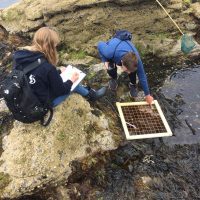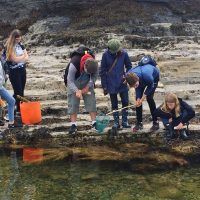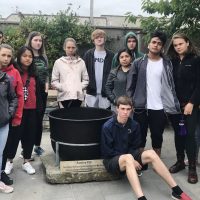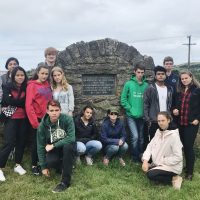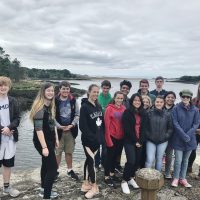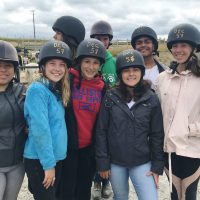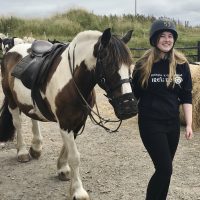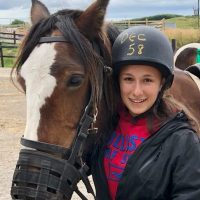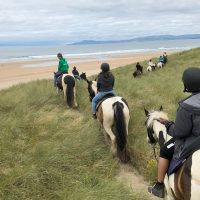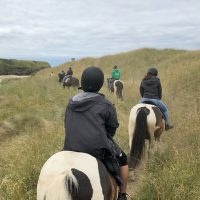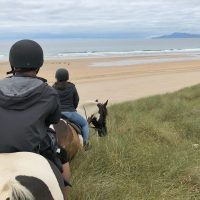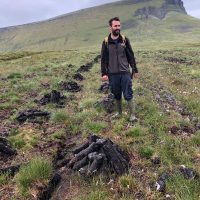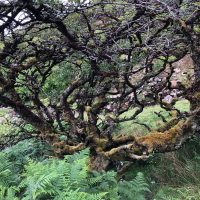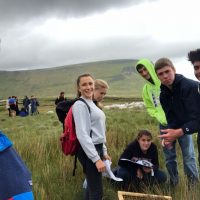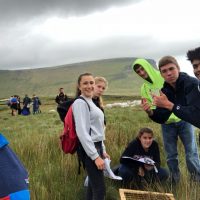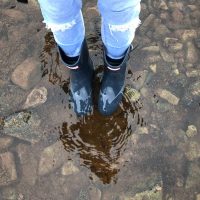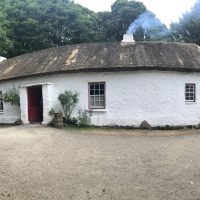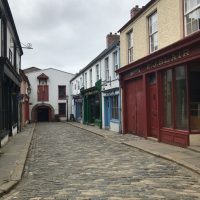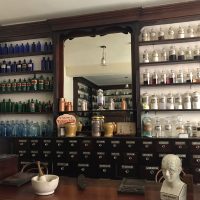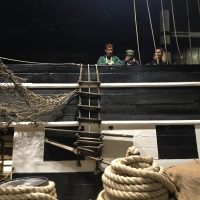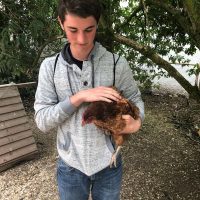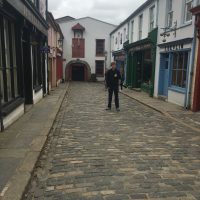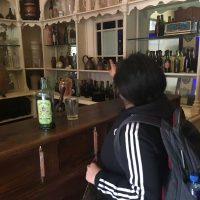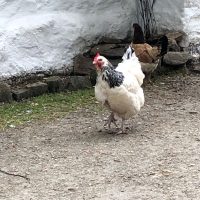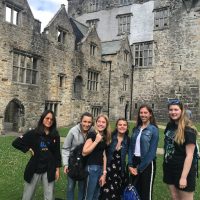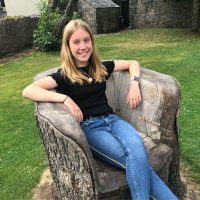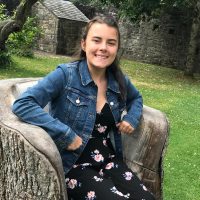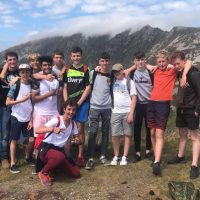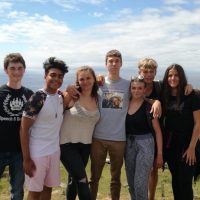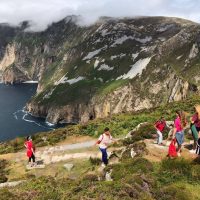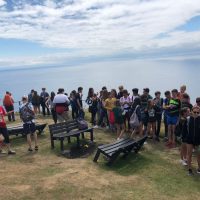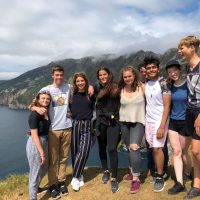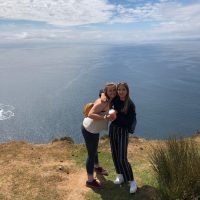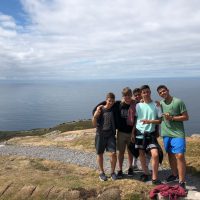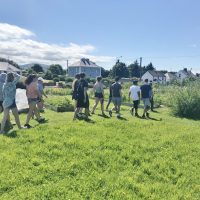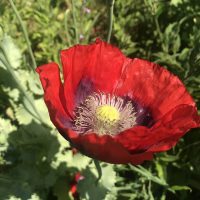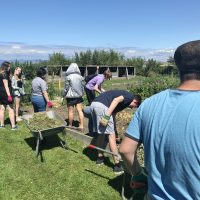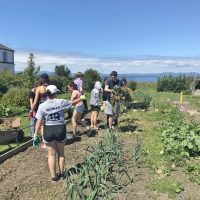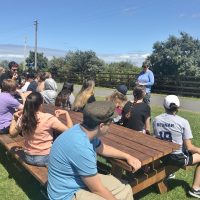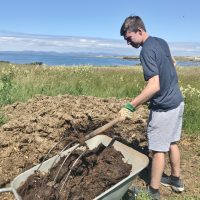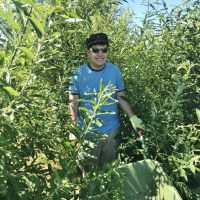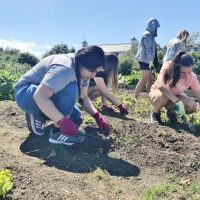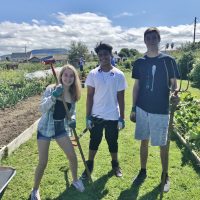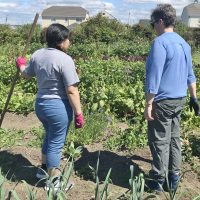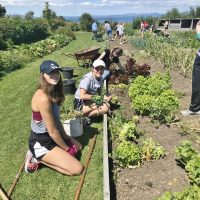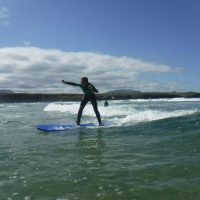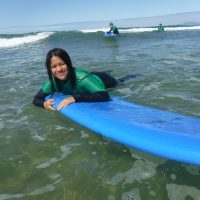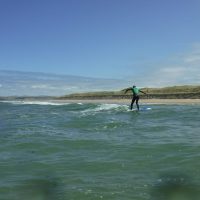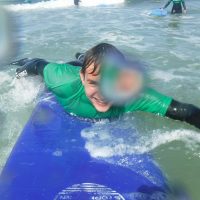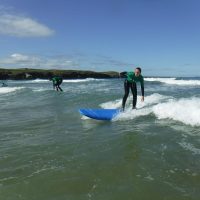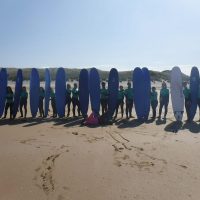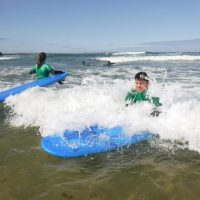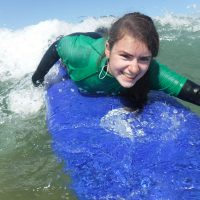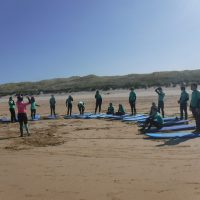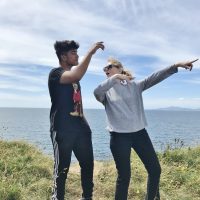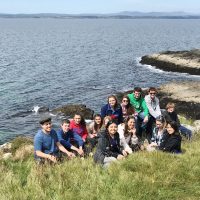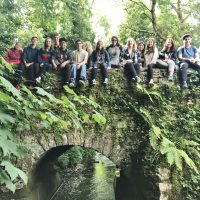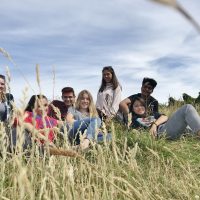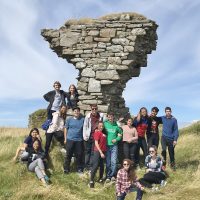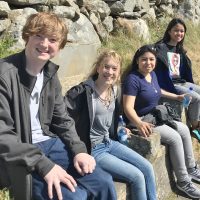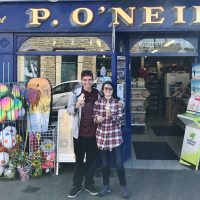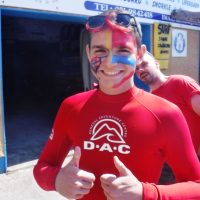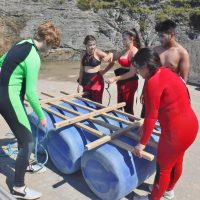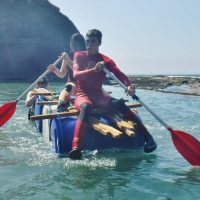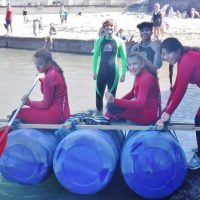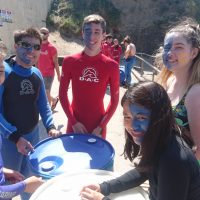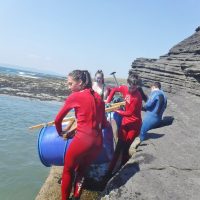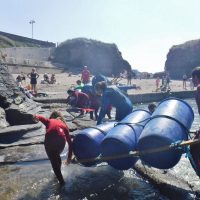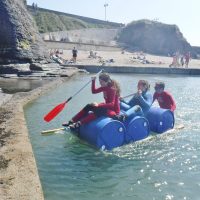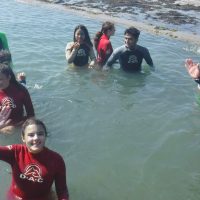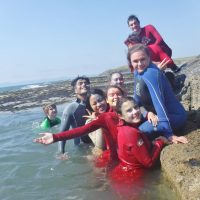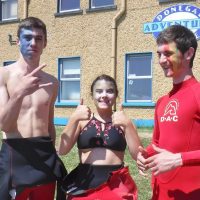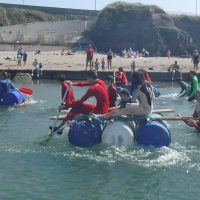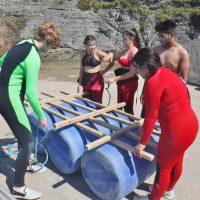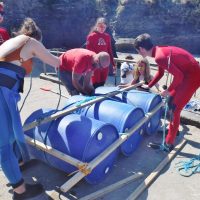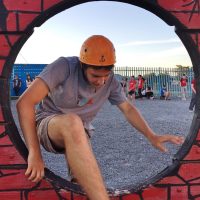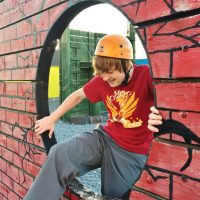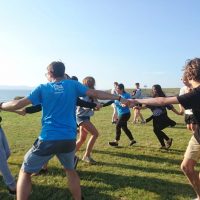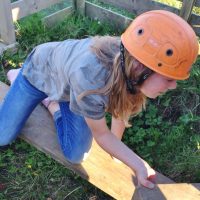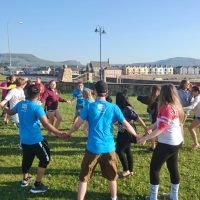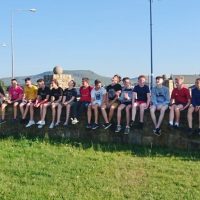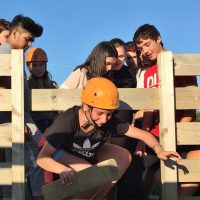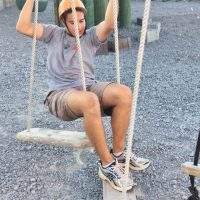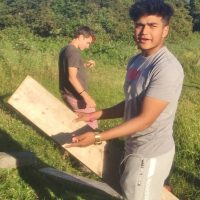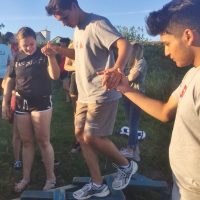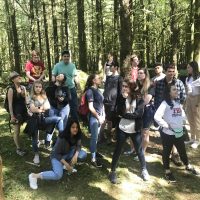THE GLOBAL SCHOLARS SUMMER BLOG 2018 ISAI Drew University
Welcome to our real-time blog of our Global Scholars Program. The Global Scholars Summer Program is run by the Institute of Study Abroad Ireland and Drew University NJ. It is a pre-college study abroad program called ‘Global Perspectives in Irish History and Culture’ and it is for high school students aged between 16 and 18. See below for extracts from the students’ daily blogs, photos and videos.
Day 18 Friday July 20th July
On Friday July 20th, we concluded our three-week Global Scholars program with individual student presentations. Each of our students presented on a topic of interest to them, and they researched and prepared for their presentations during the program. We were so impressed with every single presentation made, – congratulations to all of our fantastic students, here’s a little clip of our presenters.
Our award for Global Scholar of 2018 went to Helena Christensen of Spokane, WA, for consistently excellent work.
Day 17 Thursday 19th July
Theme: Civil Rights & Social Justice: Conflict & Resolution
Lecturer: Dr. Niamh Hamill
Today, we considered the events in Northern Ireland that lead to the establishment of the Northern Ireland Civil Rights Association. We compared the Civil Rights movement in Northern Ireland with the work of Dr. King and the Civil Rights movement in the U.S. We studied the events of Bloody Sunday January 30th 1972, the violent aftermath, life in Northern Ireland during the Troubles, the Peace Process, and the Good Friday Agreement. Then we went to visit Derry City, including a tour of the Museum of Free Derry, a walk along the People’s Gallery Murals by the Bogside Artists, and a stroll on the 17C city walls.
“In today’s last class, we covered the period of time called the “Troubles”. This was when there was religious segregation, a center of this was Derry. Derry was a settlement founded by Colm Cille in 545, and its Irish name was Doire. When the plantation happened, the English wanted to make a stronghold in Ulster, so they chose Derry because of its location. So they took over the town and brought blacksmiths and architects from England to build a wall around it, this happened between 1613 and 1623. In 1689, King James wanted Derry and attempted to siege the city, but was locked out by the apprentice boys. During the rising in 1916, the Irish tired once again to revolt but failed. By 1921, the people of Ireland gave a solution to the English, they would survey the counties and give them the option to stay in the Union or become a Republic. All the counties except 6 left and became the Republic of Ireland in 1922. The other 6 remained in the Union and became Northern Ireland. Northern Ireland had a lot of sectarianism between Catholics and Protestants, starting in 1968. It is comparable to the South during the Civil Rights movement with Martin Luther King Jr, people were afraid of other groups gaining power. So Protestants got higher paying jobs and could get more property while the Catholics couldn’t. By August 1969, the British army was deployed in Derry and Belfast. And in 1972, during a march, the British soldiers on the city walls fired at the protesters. 14 people died that day and it is known as Bloody Sunday. In 2010, the Prime Minister of the UK apologized on behalf of the government and the country for the event. In Derry, we went to see the Bogside Murals and the Free Derry museum. The murals all told a story starting with a mural with all the faces of those who died on Bloody Sunday and ending with a dove and oak leaf symbolizing peace. After the museum and murals, we went into Derry and explored. The first thing I did was walk on the walls surrounding the city and see the canons and the different neighborhoods. After walking,I then went into the Guildhall and looked at all the different images on the stain glass windows. “-Lena, USA
“On my last day of class we talked about civil rights in Ireland and compared them to the American civil rights. Unlike America’s civil rights that was focused around racism, Ireland’s civil rights was focused around sectarianism. Most of Ireland’s past sectarianism revolved around the northern part of the country, especially in Derry. Today we were able to walk around Derry where several civil rights events took place. We started our day by going to a museum located at the site of Bloody Sunday, a shooting dead of 14 protesters on January 30th 1972. The museum displayed artifacts of the victims and posters protesters carried on that day. In addition, at the end of the museum, there was a 2010 video of the British prime minister apologizing for the acts done by the British Army on that day. I thought this was really cool because its very rare for the leader of a country to publicly apologize for their own army. After the museum, we walked through Derry to look at the murals painted by the Bogside artists. Each mural painted describes the events from the past leading to the future. I thought they were really cool and it was a really creative way to show the progression of the civil rights in Ireland. ”
-Addie
“Our field trip we took today was to Derry and it really had an impact on me. While I was there, I really understood what you were[Niamh was] talking about in class. The Protestants and Catholics were a lot like the blacks and whites in America, we had our own Bloody Sunday there too. Our Bloody Sunday wasn’t as thoroughly studied in school, but here in Ireland it is a big deal. The civil rights movement was huge in both countries, but for some reason I had no idea it even happened here in Ireland until I stepped foot into this classroom. What I learned about the civil rights movement here made me question why I hadn’t heard of it before. This should be discussed world-wide when learning about important moments of history.
We walked through the museum that tells us the story of the tragic day. It is filled with artifacts from families affected, signs, posters and even clothing of those who died that day. I saw a shirt that belonged to John Young with a bullet hole in it. He was shot through the face and the bullet exited through his back. Seeing that shirt and learning his story made this real for me. Moving through that museum, I felt great sorrow and sadness. I kind of had the same feeling when I walked through the 9/11 memorial in New York. Bloody Sunday was a great tragedy that no one saw coming. The people were peacefully marching, peacefully protesting for what was right and then tragedy struck. At the end of the museum we watched a video of England’s Prime Minister apologizing for the court’s wrong ruling so many years ago. It sent a strong message when this world leader stood up and apologized for his countries behavior and actions. That made a big impression on a lot of people.
Next, we headed to the murals around town, it tells the story of the movement with real faces and real pictures. We started with the mural of the victims who died on Bloody Sunday all of their faces painted on the side of a building. We went all the way to the peace dove, all the colors equally spread out, the peace dove, the oak leaf and the tiny little cross in the middle. I think the third mural hit me the most. It was the mural of the little girl who died while collecting rocks for her art project. How awful is that? She was caught in crossfire while doing something for school. It made me think of my mom and other moms. My mom would be so heartbroken to get a call that I died in cross fire. To think that hundreds of moms had to feel pain like that is unimaginable. It just breaks my heart. Learning and discussing this important moment in history was both interesting and sad and I am thankful it was part of our lessons.“ -Maddy, USA
Day 16 Wednesday 18th July
Lecturer Eoin Guilfoyle
Today, it was all about rivers and lakes- water supply, pollution, the water table- and rivers and lakes as a tourism resource. We had two field trips- one was an environmental study of the River Duff, and then we enjoyed an evening kayak lesson on Lough Melvin.
“Today we had our last environmental lesson. It was focused on rivers, the veins of the ecosystem. This is is true because areas where rivers are, prosper. When they are over-used, like the Prickly Pear river in Montana, they become dry and not as nice to look at. The reason why this particular river is dried up is because of the people who live near it. This river used to be full of water but over time, more and more was taken out of it. In 1865, Montana passed its first water law. After this, there was a “Use it or lose it” mentality, so if the people didn’t use the water responsibly, they would lose the right to that water. The people had no incentive to conserve it because they got nothing out of it. Another group concerned about water usage were beer companies. They were concerned about their water footprint and how their usage of water affected how consumers looked at their company. These companies looked for many ways to address the problem.
During the field trip we went to a river in two different spots. The first spot was closer to the hills and the next spot was closer to the shore. At both spots we measured how fast the water was moving with oranges and how deep the water was in increment of 5ft going across. The reason oranges were used was because apples float on the water, while oranges float just below the surface, where the current is the fastest. The part near the hills was shorter in width but much deeper. After doing the measurements at both sites, we concluded that the spot near the shore had more water going through it because it was shallower but wider.”- Helena, USA
“In my twelfth day of culture class, I learned about degraded ecosystems, specifically in rivers and lakes. In many places such as Prickly Pear Lake there is a drought problem due to a broken system. Currently those who live on the lake are given a water right, allowing them to use a certain amount of water, however if the right is not used it could be taken away. Because of this, there is a disincentive to conserve the water, and lakes are being completely drained. With no water in the lakes, entire ecosystems are being wiped out. The current solution for this problem is to bring back the incentive to conserve water by allowing people to do whatever they choose with their water right. In addition, those who choose to keep the water in the rivers are paid by the businesses who also use the water. Because of this four billion gallons of water have been returned to the rivers and lakes.
Another problem that is currently going on has to do with run off into the rivers and streams. Most of this runoff is due to agricultural waste. This waste includes things such as fertilizers and faeces. On average, one cow can create 20 times more west than the average person can. All this waste is then washed into the ground, rivers, lakes and oceans polluting the water and the food that fish as well as other marine species eat. Recently a big issue in my town has to do with pesticide use because we are located next to Lake Michigan. Many parks, houses, schools and buildings located near the water tend to spray pesticides and herbicides in order to kill bugs and weeds; however, what they do not know is that they are also killing the wild life in the lake. The pesticides/herbicides that are sprayed on the plants soak into the ground and runoff into the water. Occasionally, the day after a rain, beaches close down due to unsafe swimming conditions. A similar thing like this happened in Ireland when a farmer sprayed pesticides on his field. Overnight, rain washed the pesticides into a popular swimming area nearby. The next day people became ill as a result of being exposed to the unsafe conditions. Overall I really enjoyed today. I definitely have a passion for marine biology, especially when it comes to protecting the waterways” – Addie USA
“Today we learned about the ways that people study rivers and some of the issues involved. Just like our study on oceans, we learned that there are people who are depleting natural resources, including water. One thing that I found very intriguing was the fact that cows contribute a larger amount of pollution (in reference to agricultural waste) than humans. The ratio is striking because they say that one cow is the same as 20 people. The water intake of these animals is also striking. The need 20-40 litres of water a day whereas people are supposed to have 2. We were able to see this dynamic today. The river we were looking at had a beach that was a field for cows. Walking around we could see that there was cow droppings very close to the river’s edge. When the rain comes, it is not hard to imagine where the waste goes.” –Sage, USA
“Our day was overall tons of fun. Besides taking calculations and measuring water levels we had time to explore the river biome. We found different animals like fish and crayfish and also got to walk through the river. There were multiple waterfalls in which we climbed up and down. We finally got to the biggest waterfall which was right next to where the river goes into the ocean. We could actually see the spot where the saltwater and freshwater would mix. We also got to explore different areas around the river, we found abandoned fisherman shacks and different holes in the ground. This was by far one of the most fun days on this trip because I love rivers so being able to go through such a clean and fresh one was amazing.” –Patrick USA
Here are more pics of our river study and evening kayak paddle:
Day 15 Tuesday 17th July
Theme: Culture, Literature and Language
The Revival of Irish Culture & The Yeats Family – Lecturer Dr. Niamh Hamill
Irish Language Revival – Lecturer Lauren Ni Cholgain
Today’s lectures dealt with culture and identity, and we learnt about the Irish Cultural Revival and the role played by the Yeats family- William, Jack, Elizabeth and Susan Yeats. Our field trip took us to various locations in the area known as Yeats Country, including beautiful St. Columba’s Church Drumcliffe, which not only has one of the finest Celtic High Crosses, but is the resting place of W.B.Yeats. We were greeted to Drumcliffe church by the rector, Malcolm, who took us inside the beautiful church, and enthralled us all with the very important early history of Drumcliffe, and its connections with St. Colmcille (St. Columba). We then travelled on to Parkes Castle, formerly the Castle of the O’Rourke tribe. This beautiful castle nestles on the shores of Lough Gill (the bright lake), and it is where W.B.Yeats’ ‘Lake Isle of Inisfree’ poem is located. The tour of the castle and grounds included a funny attempt to fit as many people as possible into the ‘sweat house’ or outdoor sauna. Here’s what the students had to say…
“Irish culture was nearly stomped out by the British between 1620-1780. Laws forbade the Irish from practicing their religion and speaking Gaelic. As such, traditional oral and written works could not be composed or spoken about. Irish culture was banned. The landlords and Planters from Scotland and England still called themselves Scottish and English. However, the children and grandchildren of the landlords and Planters found that they had a bit of an identity crisis. Their ancestors had come from England and Scotland, but they were born and raised in Ireland, surrounded by the Irish countryside and its people. But they were not Irish; they were set apart from the Irish by their wealth, English language, and Protestant religion. Ireland would not claim them as Irish, and England would not claim them as English. These unclaimed hybrids created a new culture by fusing English and Irish culture. It was called Anglo-Irish, and it saved Irish culture from dying out completely. The Anglo-Irish culture was defined by Irish poems, stories, and art translated into English. To avoid religious controversy, Protestant intellectuals used old Pagan myths to create their poetry and literature, which was written in English. Evangelicals used the Irish language to convert Irish Catholics to Protestantism. Irish-Americans sent money back to Ireland, which funded the fresh spread of Irish ideas. By trying to find their identity within society, Anglo-Irish people unintentionally revived the dying Irish culture.”-Dylan, USA
“The Irish culture survived because of many peoples’ efforts. One of the biggest things that helped was the G.A.A the Gaelic Athletic Association. They brought back traditional Gaelic sports and sponsored it throughout Ireland. Another group of people that helped were the artists, including William. B. Yeats, an Anglo-Irish poet and playwright. After class we went to Drumcliffe where we went to a Church that has a rich history of Catholic in Ireland. I had a great time exploring the Church and seeing the many historical landmarks. We got a chance to hear a summary of the history of this church by a local priest. Overall this was a great experience and I’m glad I was able to go to this historic landmark.”–Al, USA
“Today on our fieldtrip we traveled to the W.B. Yeats Grave and the Old Parks Castle. At the church that Yeats was burried at we learned about the history of Ireland and the importance of the location. We largely reviewed what we had learned about in class, however we learned that the location was where the war between the North and South end Clans began to fight over the copyright over the holy texts. The battle ended with the North winning and the south taking a major loss. This began the decline of the druids in Irish culture. In the Old Parks Castle we learned about the history of the castle and how it was built and than later remodeled when the British took it over.”-Anthony, USA
“Today I learned about the cultural revival. This started after the famine, around 1850. Before this there was Celtic culture but that declined into almost nothing when Christianity and the English came. When the English came, there was people who considered themselves Irish-English after a period of time. These people were the wealthy, Protestant intellectuals. They got their inspiration from the Celtic culture. Thus the Anglo-Irish culture. With this new culture, Irish culture slowly came back with the help of the people. There were associations to bring back sports, language, and literature. An example is the Gaelic Athletic Association. One important figure was W. B. Yeats. Yeats was a writer born into a family of artists. He wrote poems and plays with the Irish culture.“- Gilly USA
Day 14 Monday July 16th
Theme: Emigration to the USA during and after the Great Hunger 1845-1850. The reception of Irish immigrants in the USA in the nineteenth century, and the reception of immigrants today.
Field trip to Doagh Famine Village, Inishowen. This remarkable project in North Donegal is the work of the Doherty family, who repurposed their own family home and surrounds to recreate 19th century Donegal. We stopped en-route for lunch at the award-winning Nancy’s Barn in Ballyliffin.
“We went to a famine village in Doagh, Inishowen. This little village was actually a home up until the 1980’s and the people turned it into a little museum. The first little house was the original house. It had two rooms, a bedroom and a kitchen. There were two beds in the main area that had other functions. The Kitchen Bed was reserved for the grandparent whom the house originally belonged too, since that is where they slept, they controlled the kitchen. The next bed doubled as a seat. So when used as a bed, it makes an opened box look, when closed it becomes a bench. Both are rather short because there was the superstition that sleeping on your back would have ties to death, so they slept upright. The next little house is where Poteen (a home-made whiskey) was made.It was made was because people needed income. The ingredients were very simple and could be easily gathered. It would be often sent to Belfast and other places. During this time, we were also told about alcohol exports and trade in general in modern day Ireland. Ireland is one of the three nations most dependent on the American market, the others being Mexico and Canada. Another brief conversation was about how 45% of whiskey products go to America and the possibility of higher taxes on EU products due to negotiations with Trump. The last little house was representing an “Irish Wake”. A wake is sort of like an open casket, but you only talk about good memories with that person because you are in a room with their friends and family. We learned how it was disrespectful to leave from a wake early, you would have to spend time with the others because it could be beloved you could falsify the events at the wake. After this we went into a little cave area where we learned about the famine itself and what the diet was like before the famine. When leaving we went into a little area that had a sod house, and a famine house. The sod house was for unmarried women with children. They were sent away so they would not be bringing shame and bad luck to the family. The famine house had an example of a family being evicted and a old battering ram structure that would be used to take down the house if the residents failed to pay rent after a certain period of time. After that, we went and sat in an example of an Orange or Unionist meeting hall. Orange Men believe that they were better off staying with the UK and are Protestant. Across from the Orange Hall was an IRA safe house that had lots of secret doorways in case they were caught. Both groups were secretly being funded, the Unionists by the British Establishment and the IRA by sympathetic supporters in the United States” –Helena, USA
“Today in class we continued learning about the famine, however we focused on the American reception of immigrants ( how it is similar to today’s circumstances). When the Irish first landed in America they were sick, poor, and did not speak good English, because of these reasons people really hated them. In response to so many immigrants, people created the party called the Know Nothings, whose slogan was “America First”. These people worried that the Irish would disrupt the economy and steal jobs, however even though the Irish where hated, many still came and got jobs that no one else wanted to do. Due to their ability to work, and fit in, they were able to move up in the ranks of life. After class today, we went to the Doagh Famine Village. The Village was a portal to another time. We began by learning how the people located in Northern Donegal lived and made a living during the Famine. They made illegal Poteen and sold it, due to this the area survived a bit more than other parts, they could sell the Potin for 2 shillings. Many people were arrested and put in jail, but the need for money largely made it a necessity. We learned about the eviction of people who failed to pay rent and the subsequent failure of the rich to pay the banks. During the famine, people began to starve so they sold all that they could afford food and due to them spending all the money on food they were unable to pay rent. When the people are unable to pay rent, the landlord would evict them and bring in more people, however as the famine continued no one had money or could pay rent. When the tenants could not pay rent the landlord no longer had more money and failed to pay the banks. When that happened the new landlords the bank brought in suffered the same fate. In the Village we also learned about the history of the Orange Order and the Orange Hall. The Orange halls where created for the Unionists who felt connected to Great Britain, not Ireland.” –Anthony, USA
“Today I got to learn about how America responded to immigrants from Ireland. We also went further up north of Donegal and we got to visit the Doagh Famine Village and Malin Head. It was worth a two-hour drive to head up towards to where the Doagh Famine Village was located. The village tells the story of families and the community of Donegal living close to the Atlantic, surviving the Famine. As we got to explore this museum, we also got to look inside the houses that remained. Aside from the village, we also travelled to Malin Head. Parts of the last Star Wars movie ‘The Last Jedi’ was filmed here. I thought this area was very scenic and beautiful, and I enjoyed the exercise scrambling over the dunes!” –Will, USA
Saturday July 14th – Global Scholars Hike to Ben Bulben Mountain
All of our scholars from USA, Ireland, Spain, France, UK, Italy, Vietnam & Germany went on a hike to the iconic Ben Bulben Mountain in Sligo. Benbulben is known as County Sligo’s ‘Table Mountain’ and is part of the Dartry Mountain range. It is one of the most well-known landmarks in Ireland, and features in many legends and stories of the Irish past. Ben Bulben and the surrounding area is also known as ‘Yeats Country’ because of its association with W.B. Yeats, poet and playwright, Jack B.Yeats, painter, and Susan and Elizabeth Yeats, artists.
On Saturday evening, we enjoyed the legendary annual Global Scholars Talent Show. Special kudos must be given to Gillian Ross, who delivered an amazing monologue from Shakespeare’s Hamlet and to Will O’Donnell who performed two songs on acoustic guitar. All the students who participated are commended, but it does take courage to get up there by yourself, so hats off to Gilly and Will!
On Sunday July 15th, all our students enjoyed a day trip to the city of Galway for some sightseeing and shopping. Here’s some video and pics of the weekend!
Day 11 July 13 2018
Themes: Cultural influences of the Diaspora – Lecturer Marc Geagan
Coastal Ecosystems and Sustainability – Lecturer Eoin Guilfoyle
Marc Geagan, lecturer, cultural historian and author of Dancing by the Sea and Songs of Erne spoke to our students about the contribution that emigrants made to American culture, in particular, music and dance. Eoin prepared the students for an environmental field trip around the rockpools and coastline of Donegal’s ‘Wild Atlantic Way’ – a crucial resource for Ireland in terms of tourism, business development and sustainable harvesting. Here are some extracts from the students’ assignments
“In the music lesson today I fell in love with my country again in a way. People have been welcomed into the United States of America and have made magic due to the diversity. The vast amount of Irish immigrants that came to the United States in the middle of the 1840’s made a huge difference in the makeup of American music. Throughout the lesson, our professor gushed over the generosity of the American people and the ways that they allowed new ideas to develop. It gave me hope through looking at the past in a cultural sense, that our future will be bright.”- Sage, USA
“Today’s first class was focused on marine life. We began with seaweed and the different types- green, red, and brown.Green would be closer to shore, in more shallow water, while red is found between the green and brown. Brown being the one in the deeper parts. Another thing that differentiates seaweed from other plants, is its structure. They can’t grow unless they are attached to something solid, like a rock, it is why they are classified as algae. Another topic was pollution and its effects. An estimated $3 trillion dollars of plastic is in the ocean. Pollution harms not only the wildlife in the ocean, but the people who go into it. A charity called Surfers Against Sewage received a donation for their cause from the Royal Family, which finally made them an official charity, because sewage was going from the city to the ocean and causing surfers to get sick. Our next lesson was on American music, that had connections to Ireland or other countries in Europe. Some of the types of music with Irish influence would be Delta Blues and Gospel music. “American music is the story of the immigrant experience.” America did save traditional Irish music, due to its being recorded, replayed and becoming popular. It also helped that the Irish had strong communities with each other that kept the tradition alive as well. Some other forms of music include Country music. This came about when Scots-Irish people went into the Appalachian mountains and used old songs. A form of music with a more local origin would be Bluegrass. The type of singing in Bluegrass, “high lonesome vocal harmony” has its roots in Donegal. Some other genres of music from the mixing of other cultures include Cajun and its cousin Zydeco, and Latin music.”- Lena, USA
Today we talked about how the Irish culture influenced America’s music, the immigrants brought their culture and music with them. We saw a lot of difference types of music: the blues,the gospel, the jazz, country music, blue grass, paddy, klezmar, zydeco and Latin music. Blues or “the spiritual” really became known after the Civil War. In the 20th century gospel music really began; if gospel was the sound of Sunday morning, the blues was for Saturday night. The other great strand of African-American music was jazz; improvisation was at its heart. After the First War World the music went global, trasforming quickly and it melded with other styles, such as Jewish Klezmer and ending up as the smoother swing.”- Felicita, Italy
“When asked whether it was healthier to eat wild fish or fish farm fish, I chose the obvious answer. Of course it is healthier to eat wild fish: there’s nothing fresher than a salmon that went from the river straight to my table. However, I did not account for the salmon’s life before it became dinner. Wild fish can swim through and ingest any number of pollutants that one would never know about. Fish farms, on the other hand, have quality standards that they are required by law to meet. The water conditions at a fish farm are monitored and controlled; the fish farm fish, while not natural, are assured to be fresher than wild fish. Another problem with catching fish in the wild is the damage it causes to marine environments. Currently, humans remove the combined weight of China’s population in fish every year. This causes a disruption in ecosystems, harming more life than the fishermen intend to. Once again, fish farms prevail. Since the fish in fish farms don’t belong to any ecosystem, removing them does not cause the disruption that natural fishing causes. Certain types of fish farming can harm the environment, such as prawn farming, but other types, like muscle farming, are good for the environment as long as they are not done in excess. Although it is not the obvious choice, fish farming is clearly the better option for people who want fresh, environmentally friendly seafood.”- Dylan, USA
“We also studied the type of sea creatures that live by the shore. There are anemones,
hermit crabs, mussels, barnacles, dog whelks, periwinkles, prawn, goby and crabs, we saw all
these today. Mostly we saw barnacles and anemones. The anemone closes when not in water
and opens again when submerged in water, the reason it closes when not in water is to keep
the moisture inside and not dry out. The hermits crabs can go in and out of the water no
problem they live in shells that fit perfect to their tiny bodies. The muscles sit in clumps all
oblong the rocks, but the rocks are fully covered in barnacles. Next we have dog whelks and
periwinkles, they are basically the same except one has a pointier shell.” – Maddy, USA
“We first examined all different types of seaweed and tasted some of them. They were not very tasty but also not disgusting like most people would think. We were split up into groups of 5 and given a square with 100 quadriceps in it. We placed the square down and analyzed what animals or plants were in each quadrant. After this we had time to explore the area. We searched for different sea-life like crabs, shrimp, and pollock. We found many different crabs and shrimp, we also managed to catch one pollock which was difficult because they swim very fast. The highlight of the day was seeing a massive jelly fish, which we found out was dead but it was still cool to see a giant jelly fish still fully intact.”- Patrick, USA
Day 10 July 12 2018
Themes: Poverty, Famine and Emigration – Dr. Niamh Hamill
Today in class we covered ‘An Gorta Mór’ – the years between 1845-1850 when a nationwide failure of the potato crop led to mass starvation and emigration. Our field trip took us to famine sites locally, including the Ballyshannon Workhouse, the Famine Graveyard, the Ballyshannon Museum and the Mall Quay, a departure point for thousands during this period.
“Today in class we talked about the Potato Famine and in Ireland they call it “AN GORTA MOR”, which translates to the great hunger. There was no famine in Ireland, there was plenty of food to give the people but the government and the landowners didn’t want to. The potato crop is the only crop that the poor people at that time could grow to help them survive. But out of nowhere phytoptora infestans spreads through out all the potato crops in Ireland and kills all the potato in Ireland. This goes on for 5 long years, from 1845-1849.The famine was ignored it for 2 years. People in England thought that’s what the Irish deserved and it was a will of god. Then people decided to set up Workhouses, which gave people a wooden bed to sleep on and food to eat, exchanged for labor work. They also did transportation, which meant Irish people going and living in British Colonies. People then started to do Charity work and donate to Ireland but that had little effect. Finally the only choice was often to emigrate, it was ether stay in Ireland and die, or go to America. After class we went to a Work house that use to hold more then 900 people. This work house was only built for400 people but there was a lot of people in need of help. I found it really interesting to see a work house in person instead of looking at a picture of one in textbooks. After that we went to the piers were the Irish people use to get on boats and sail to America. That was my favorite part of the trip, because you can feel all the history and memories in that area. To imagine thousands of people getting on tiny ships to get to America just so they won’t die is incredible. And most of them knew that they will never see their home country again but they still took that chance and went.”-AL, USA
“The Great Famine is a misnomer. Famine implies that there was no food to feed the poor Irish folk; there was actually plenty of food to go around, but the poor did not have access to it. The Gaelic name for the Great Famine is “An Gorta Mór”, or the Great Hunger, which is far more accurate than famine.
Poor Irish folk farmed their landlord’s land and grew their own food on a much smaller plot of land. The large peasant families faced many difficulties when it came to providing for the family. The smaller plot could not support many plants because it had bad soil and was tiny. The Irish needed a hearty and nutritious vegetable that would grow in bulk. The potato was the perfect solution to the Irish people’s problem, and they soon became dependent on the plant.
In 1845, a fungus called Phytophtora infestans, or blight, killed off the potato crop. The first two years of the Great Hunger saw the Irish selling or eating their livestock, with fewer deaths than the next three years. However, after they ran out of livestock, Irish people began dying at an alarming rate. The British government, who had previously chosen to ignore the Hunger, began setting up work houses. Work houses were prison-like buildings that give Irish peasants a poor quality stew and a cell to stay in in exchange for trivial hard labor (building famine walls, famine roads). Work houses were quickly over crowded. Filled with poor people living in disgusting conditions, disease was rampant in the houses. Work houses, a last resort at first, became a death sentence.
The British government considered selling corn as an alternative to potatoes, but sellers were unwilling to lose money by lowering the price of corn to an amount that the peasants were able to pay. This is comparable to large pharmaceutical companies inflating the price of life saving equipment such as Epi Pens and Daraprim (a medication used to treat AIDS) simply because they have a monopoly on the market for their particular product and have a capitalist mindset rather than a humanitarian one. Much like the corn sellers during the Hunger, the pharmaceutical companies chose to put their business and money before the lives of others; who knows how many deaths could have been prevented had the corn sellers lowered their prices for the sake of the starving Irish. “-Dylan, USA
“In my eighth day of culture class I learned about “An Gorta Mór” (the great hunger) more commonly known as the potato famine. Due to the Act Of Union in the 1800s mass poverty afflicted Ireland. Poor Irish farmers who were living on the land of rich Landlords needed a way to get proper nutrients by growing as much food in as little of a space as possible. Potatoes grew in large amounts, were easy to grow in just about any soil and were rich in nutrients, they could also be eaten in a variety of ways and the entire potato could be consumed. Soon most of the Irish practically relied on the potato crop. Not long after, in 1845 the crop became diseased with a fungus called Phytophthora Infestans. The fungus that infected the potatoes turned the inside of the crop into nothing but mush. For 5 years the entire potato crop was practically wiped out. In the first and second years many of the other countries ignored the famine. At one point England proposed the idea of dropping the prices of corn however stockholders refused to agree with the fear of losing money. Around the third year workhouse’s began to open. The workhouse was a place that offered poor Irish a bed with a straw mattress, one meal and a roof over their heads in exchange for labor intensive work. The workhouse would house hundreds of sick malnourished people in close quarters. These conditions lead to outbreaks of deadly diseases such as cholera. A local landlord, Colonel Connolly ended up donating the Mullanashee land for the estimated 100 victims of the disease. Eventually the conditions in the workhouses were killing more people than it was helping and for many, the only other option was to emigrate out of Ireland. While charity work from some landlords and the Choctaw Nation helped, it was still not enough to help the millions of Irish suffering. By this point many people were beginning to emigrate out of Ireland to America. In total one million Irish died and one million Irish emigrated. To this day the population in Ireland has still never recovered. I find that to be incredibly shocking. The amount of people that suffered during that time is almost impossible for me to imagine and it has left an impact on all of Ireland and millions of people in America including me and my family. -Addie, USA
In the afternoon, our students took a very pleasant trek across the beach dunes on horseback, thanks to the Donegal Equestrian Centre.
Day 9 July 11 2018
Themes: History & Culture of Irish Music – Lecturer Marc Geagan (Northwest College) Environment & Sustainability part 1: Boglands -Lecturer Eoin Guilfoyle
Marc Geagan delivered the first of a two-part module on the history of Irish music and musicianship, and Eoin Guilfoyle delivered the first of a three-part module on the Irish environment, dealing with the phenomena of the Irish boglands, turf and timber harvesting, sustainable policies for the future, and flora, fauna and wildlife of the boglands.
“In today’s class, we have learned about the boglands – a type of ground that covers 5% of Irish landscape.Approximately 100 different species of plants and insects survive on the boglands. The formation of boglands began around 10000 years ago, after the last ice age when Ireland was full of lake containing melted ice. Over the time, with the lack of oxygen and poor drainage, it had led to the result in layers of dead plants that could not fully decompose. They remained there and built up until and formed the present bogs. There are two types of boglands in Ireland: blanket bogs and raised bogs. Blanket bogs grow usually in mountains or near the west coasts of Ireland where there are high amount of rainfall each year. Although the boglands are not good for the environment, they do benefit humans a lots. People have already use turf which is cut from peat as fuel to burn. Even there though there are other cheap source but many families still prefer to use it until today. Cotton in boglands can be used to make clothes or transform boglands to grasslands for grazing. Because it can stem the growth of bacteria, some people also use it as a refrigerator. Beside the advantages, boglands are bad for the biosphere, they pollute the water and can be unsightly. Also, when people collect turf, they put them in too many plastic bags that sometimes it fall down to the springs and stick to the rock for thousand of years.” Mai Phuong Le, Vietnam
“Today we learned about bogs in Ireland. The bogs in Ireland are created by partially decomposed plant materials in wetlands. Bogs are unable to fully decompose the area where they are usually located in are water logged. There are also two types of bogs, raised bogs and blanket bogs. The blanket bogs form on high grounds where there is a high level of precipitation, and the raised ones formed after the last Ice Age. We went on a field trip to the mountains of Carrownamadda, in County Sligo. As we went and explored sphagnum, black bog, pipewort, butterworth, sundews, etc.”-Will, USA
Today I learned about bogs. Bogs are in wetlands and are created by partially decomposed plants. The bog is always water logged, making the plant material unable to fully break down into soil. In the bog there is little to no oxygen, making it hard for bacteria to live and break down the material. In Ireland the people cut the bog to make turf. Turf is dried up rectangular cut pieces of bog. Turf is used as fuel,but cutting turf is bad for the ecosystem. By cutting turf the water with decomposed minerals gets out and into the water supplies. One solution I came up with is using water, solar, and wind power.” Gilly, USA
“The Bog is the accumulation of plant matter and water over the course of thousands of years. These ingredients compact and cause an organic phenomena that lacks oxygen, therefore, has no bacteria. With the absence of bacteria, nothing can grow in these places but the curious thing is that nothing can decompose. Throughout Ireland’s history, Turf (this comes from the bog, the dried up soil) has been pivotal in the communities’ survival. Turf has many purposes such as heat, weaving, amongst other things. As helpful as it is, there are some negative implications it sets on the environment. When turf is burned it releases Methane gas. The Bog is immensely important to the biodiversity and ecosystem of Ireland. As stated earlier, The Bog takes hundreds of years to grow, meaning it is not a sustainable fuel. Through the actions of human beings, there has been a decrease in the amount of bog in Ireland. Today only 5% of the country is covered in the bog. For the first time in Irish history, there is a shortage in drinking water, there has been flash flooding, and native species are depleting. I believe that the families who have farmed the land should have the rights to whatever infrastructure is brought in and the profits it might generate. The new trade that could be brought in is wind power and solar power. The government would give incentive to the families to invest in this machinery with the promise that the energy would save them thousands. By allowing this land to become a place of sustainable energy The bogs would have the ability to grow back and there would be less methane emitted into the air.” Sage, USA
Day 8 July 10 2018
Theme- Emigration to the USA (part one) Ulster Scots to the colonies
Our field trip today was to the Ulster American Folk Park.
The Ulster American Folk Park is an outdoor museum which brings to life people’s daily routines and activities in both the Old and New Worlds. Notable buildings include the famous Mellon Homestead, as well as buildings from America which have been relocated to the museum. An Ulster street, complete with original shop fronts, and an American street have been reconstructed alongside a full-scale dockside galley and ship, the Brig Union. Together, they recreate the conditions that many thousands of emigrants experienced before, during and after the arduous Atlantic crossing. The museum recreates a time when local crafts and tradespeople played a vital part in manufacturing and delivering the goods and services that were needed. Costumed characters relate tales of everyday life and customs while demonstrating traditional crafts and skills, such as spinning, basket making, printing, quilting, blacksmithing, open-hearth cooking and corn craft.
Our students had interviews and reports to write up on their visit to the Folk Park.
“Today in class we discussed the changes of society and power in Ireland. In the early 1600s James I ruled over Ireland. He gave all the English and Scottish Landowners land to fulfill his promises. Ulster is the closest province to England making it easy for it to be taken over by the English. The plantation of Ulster goes through a period of Penal Laws. The majority of Irish people went from having agency and authority to having nothing and becoming tenants for the English/Scottish. As the 1700s draw closer, the lower part of Ireland lays in the hands of foreign ownership. Society in Ireland becomes very unstable because people are either very wealthy landowners or very poor land dwellers. The majority of people were land dwellers making society unstable. When the landlords moved over, they began to build houses on the large land given to them. This then became a sort of competition because when a landlord built his house the next landlord would try to outdo him. Building houses was not easy; it cost a lot of money. The landlords would borrow money from the bank but have to pay it back. So in order to pay back the loans the took out, the owners made money by letting the land dwellers live in small cottages on his land. In return the dwellers worked in the fields and paid their rent with the money the owners gave to them. The workers were not slaves because they could leave at any moment. It was hard to live in these cottages because normally the families had more than five kids. Population began to increase but there was less food to go around. Income levels were low so it was hard to provide and support a family of 10. The Penal Laws meant no church, school, and Irish history is banned. There was no education system for people to go to school and learn. Protestants had access to school but Catholics didn’t so they would have to do it in secret. Soon the tenants were fed up with the corrupt system they lived by and began to rebel. They rioted and and often destroyed property and animals. Many times the owners were driven out because they were outnumbered. The tenants heard about the New World and the freedom they would get if they lived there so they left Ireland. The New World promised jobs, freedom, and hope for a better future. The colonies were able to leave the British power but Ireland wasn’t as successful. Ireland asked help from the French and did help but Britain won the war. After the war, Britain became more strict on the Irish than before. They passed the Act of Union in the 1800s which limited the Irish freedom. Soon Ireland became an island of poor people.”- Marlen, USA
“Today we took a tour around Ulster American Folk Park. That’s where we were able to experience the emigrant adventure and struggles of living in cottages of Ulster. Also we were able to board a full scale emigrant sailing ship to go to the American Frontier. This whole experience was interesting because I was able to feel what they felt at that time. I couldn’t imagine the struggles they went through their daily life’s just to survive. I loved seeing how they portrayed the American Frontier, because is reminds me of what I use to see back at home in the museums.” – Al, USA
“Today we focused about the years around 1650-1800. During this years, the Ireland’s lands is redistributed between English and Scottish owners. The population is divided in two different groups: the land owners who were the richest and the poor people which were the larger population. The poor people worked for the landowners and they paid rent to the landlord. Many poor wanted a better life; and so began emigration to America.”– Felicita, Italy
Day 7 July 9 2018
Theme: ‘From a Kingdom to a Colony – the Reformation, the war between the Irish lordships and the English Crown, and the Plantation of Ulster. Lecturer- Dr. Niamh Hamill
Gaelic Language Class- Lauren Ní Cholgáin.
Our field trip today was to the O’Donnell Castle in Donegal Town, and Donegal Abbey, associated with the Annals of the Four Masters.
“Today, we visited Donegal Castle. Constructed in the 15th Century by the O’Donnell clan, this fort of foreigners was built for defense. It has window slits to thwart archers, small entrances to prevent easy entries, and trip stairs, which are designed to make it hard for an intruder to get upstairs. The thick walls keep the castle’s inhabitants safe from weather and attackers. Red Hugh (Aodh Rua) O’Donnell was the lord of O’Donnell Castle in the . He is known for his campaigns against the British forces sent by Queen Elizabeth I. After Hugh lost the war, ownership of the castle was transferred to Captain Basil Brooke. Brooke added onto and modified the Castle in attempt to erase its Irish roots and make it more English, but the original towerhouse still stands.
Along with Captain Brooke came thousands of Protestant Scottish people. This was called the Plantation of Ulster, where King James I took land from Irish folk and encouraged poor Scottish people to take it and farm it. This was done for a number of reasons:It diminished Catholicism and spread Protestantism in Ireland.
It rewarded Scottish people who supported King James I and his campaign for the throne.
It replaced historically troublesome Irish people with a loyal community of Scottish people.
– Dylan, USA
“Henry the VIII was the beginning of the conflict. He did not have children therefore he was a tad bit stressed about his life as a royal. He blamed his wife for the lack of conception and wanted a annulment of their marriage. The Pope at the time hated him and did not grant him the ability to leave his wife for a new one. In a grasp for power he left the Catholic Church and created the Church of England. This caused a huge conflict between the Protestants and Catholics. Henry VIII and Elizabeth I saw Ireland as a military base that was very strategic. The field trip was the most interesting part of today for me, the castle was incredible- to see the actual evidence of this cultural shift from the Gaelic kingdom to the post-Plantation Ulster.. To walk through this part of history in Ireland was incredible.” –Sage USA
“Today I learned about the end of the golden age, assimilation of others in Ireland, Hugh Donnell (Donegal) and Hugh O’Neill (Tyrone). The beginning of assimilation in Ireland began in the 10th century when the vikings moved from Scandinavia to Ireland. They docked their ships on the east coast in a river they called black pool-‘dubh linn’ -hence the city Dublin. When the Vikings arrived in Ireland their original plan was to take over the Irish land however they ended up enjoying the Irish culture and began to assimilate into it. When this happened vikings brought coins, culture and surnames. 200 years later the Normans invaded from France. When they came, they also learned Gaelic,intermarried and learned to play Irish instruments. For 2000 years the Irish had quite a stable culture, language and set-up, despite the invasions. During the 16th century Henry VIII created a split in the English Church -it became Protestant. Because of this, wars broke out between Britain (Protestant) and France and Spain (Catholicism) It was because of these wars that England needed to gain control of Ireland. Later, during Queen Elizabeth’s rule, she took over Connacht and Munster however Ulster, under the ruling of chiefs Hugh Donnell and Hugh O’Neill did not surrender. This lead to war between the provinces however due to miscommunication with Ulster and its alliances Spain and France, O’ Donnell and O’Neill were forced to surrender to England. When I learned this I was disappointed because one miscommunication made it possible for the last Irish province to be taken under British rule. Queen Elizabeth died shortly after and the new King to come to rule was James the 6th of Scotland. He had promised his friends and family land and he also had to deal with the newly acquired territory in Ireland. James decided to give his friends and family the Irish land and push the Irish who were originally living there out towards the west. James’ plan of colonization was to start by taking land away from Irish Catholics and move them to the west. Then he planned to give land to loyal protestant as well as relocate Scottish Protestant farmers to the land. I found this day to be very interesting and I really enjoyed going to O’Donnell’s castle. I find it really fascinating that he himself lived and walked on the same floors we were standing on. -Addie USA
Our weekend – July 7 & 8, we visited ‘Yeats Country’, the nearby counties of Sligo and Leitrim, famous for their beautiful scenery and inspirational effect on William Butler Yeats, poet, and John Butler Yeats, artist. We also went on a hike to Sliabh Liag, a remarkable beauty spot in west Donegal, and we climbed above the highest sea-cliffs in Europe.
Day 4 July 6 2018
Service Project – Bundoran Community Garden
Our students are invited to support our community here in North-West Donegal through a number of service projects. Today, our global scholars visited the Bundoran Community Garden. The Community Garden Project is managed by the wonderful Sr. Assumpta, who provided an overview of what the project provides, and then gloves, wheelbarrows and plenty of work for our willing volunteers.
“We met with the gardener of the community garden which was one of the coolest places I have ever been. It is fully organic and all the food there is healthy with no chemicals or preservatives. She knew the garden like the back of her hand and gave us the full tour. The garden serves as a place in the community where everyone can place their plants and foods. There are about 30 families who participate with this and they come and visit a lot. The most common time for them is around 7-10 on Thursday when they get off of work. They come and tend their crops. I think it is an amazing idea because a lot of people cannot grow things on their own but when there is a whole community with them it really helps with the growth. They all help and support each other. We had our special jobs to do which consisted of weeding and filling wheel barrows of manure. While most people would think that that is a nasty job I happen to love labor like that because it reminds me of my job at home. Me and my friend Al worked with the manure for the most part and it was nice to be reminded of what manual labor is like. The farm was beautiful because it catered to all species like bugs and animals. We had a lovely tea time at the end and hand fed some of the hens there. “- Patrick USA
” This experience in Ireland has brought me closer to the land and made feel less like a tourist and more like a local because of the commitment of giving back.We fed chickens, weeded local crops, and helped decompose plant waste and it sounds as laborious as it was but it helped us in our journey to understand Ireland. We have throughout this trip experienced off-the-path journeys that all basic touristamiss and this makes the experience that much more unique. Today was the most exhausting day by far but it well makes up for it with the fact we not only helped the community but helped ourselves. We helped produce the crops that are the lifeblood of this community and that made me feel that much more in touch with the education I am receiving.”- Jacob USA
“During the afternoon, we went to go help out the local eco-garden. We picked up weeds, cleared out some spaces and moved compost. There was so much diversity in the plant life, I never really get to see all those different plants together in one little ecosystem. Learning about the things in a garden and helping out with something that benefits many in Bundoran was a humbling experience. The people that benefit from this garden include around 30 families, 20 people who come in for a class, and businesses in the town itself. The families benefit from the garden because it provides healthy food that grew with no chemicals, it is organic. By having organic food, it allows families to stay healthy in different situations that may cause problems. The other 20 benefit from it because they take a class on growing and maintain a garden. With the knowledge of this, they can make their own gardens which would help the environment. The businesses benefit because it is all local produce. They know where it is from and it is almost from farm to table in a couple of days or less. This lets people enjoy food that is grown locally and organically.”-Lena USA
“Today was a productive and fun day at the eco garden. Sr. Assumpta started the garden 12 years ago. There are about 30 families that share part of the garden because they have their own plants growing there. Some of the crops planted are potatoes, lettuce, beans, onions, beetroot, and raspberries. There are many other plants there all benefiting the community. It’s a great way for the families to come together and unite helping the community and themselves making it grow and prosper. For the past 10 weeks the weather has been really hot and this helped give enough time to produce lots of crops. The red lettuce does a lot better in this weather as well. In Ireland people like to eat fresh fruits and vegetables so this garden gives them the opportunity to do so. She will sell the lettuce to the local stores and from there can get supplies for the garden. Sr. Assumpta hates the stinging nettle flowers. She won’t go near them but yet at the end of the day will have gotten stung by it. If she gets rid of those flowers the red admiral butterfly will also leave with it. The butterflies are in cycle with these plants and help the other garden plants as well. There are also bees in the the garden and the produce lots of honey. This past winter was a very harsh winter so the honey they produced she let them keep as food.I helped in the garden by pulling out the weeds and collecting the dead leaves. Many families are on vacation so they can’t tend their garden. When they get back they won’t have to worry about the weeds killing their plants or taking too much space.”–Marlen USA
We also had a beginner surf lesson – Bundoran is famous for great surfing conditions, and surfing is a great activity for learning to appreciate the marine environment, and appreciate the benefits of fun in the outdoors. Everyone went on the lesson, and it was a great success. Here’s the photos
Day 3 July 5 2018
Theme: Early Christianity in Ireland- Evangelism and Cultural Change Classes St. Patrick and the conversion of Ireland to Christianity – Dr. Niamh Hamill
Irish Language Lauren Ní Cholgáin
Winning hearts and minds- cultural narratives and power – Dr. Niamh Hamill
Today’s classes and field trip focused on the period 432-900, when Ireland became known as the ‘Isle of Saints and Scholars’. Our field trip took us to St. Patrick’s Well at Asseroe Abbey, Ballyshannon, Catsby Cave Mass Rock, and the ruins of Kilbarron, birthplace of Michéal O’ Cleirigh, one of the Four Masters. On the way home, we enjoyed the Irish summer tradition of the ’99’ ice cream cone!
“Today we learned about how Christianity spread to Ireland. The first people in Ireland were pagans and their lifestyle reflected their beliefs. Patrick was a teenager from Britain or France. He was kidnapped by an Irish group and enslaved. After 6 years he managed to escape. After a couple years he returns as a missionary. Patrick had lived in Ireland long enough to learn their language and beliefs. He used this to an advantage to convince them to become Christians. There were many things he was familiar with. He used symbols sacred to the Druids, like the number three, to teach Christianity to the people. After progressing slowly he then began to establish monasteries all over Ireland.” –Marlen, USA
“The lessons today were about the the golden age of Ireland from 432 AD to 900 AD. St. Patrick who brought Christianity was surprisingly not Irish, he had been kidnapped and taken there when he was young. Even though he managed to escape from the island, he decided to return and join a campaign to convert the Irish to Christianity. The missionaries influenced some great changes in Ireland in many aspects such as custom and tradition, art and craft, and they introduced reading and writing. n the afternoon, we went to the Abbey Assaroe and Catsby Cave and I was really interested in going to such peaceful and tranquil places like this. The story about the Children of Lir, and the Prayer tree were really interesting. During the penal times, because it was prohibited to go to the church, people connected to spiritual world in secret to celebrate instead.”- Mai Phuong, Vietnam
“Today we learned how Christianity came to Ireland. We covered the cultural changes that happened to convince the Celts to convert from Paganism to Christianity. Some of the things that happened was the sponsoring of missionaries by the Taoisigh. They changed forts into monastic cities through building schools and churches. I couldn’t help but think that when other cultures are faced with the presence of a new religion, the natives are often forced to convert. So the fact that they weren’t forcefully converted, it was by choice was really cool to hear. When we went out today we went to Kilbarron Castle and Abbey Asseroe. We were also able to see the Pagan and Christian site where there was a Wishing Tree, a Holy Well, and a statue of Saint Patrick. Seeing the Paganism and Christianity in one place so close to each other really shows how there is still so much in common that people believe. Kilbarron castle, was the birthplace of Michael O’Cleary, one of the 4 Masters and a historian for the O’Donnels. In our Gaelic lesson, we were given some phrases to look up and translate them. I think that it is cool that most greetings are a blessing in a way. It is still difficult to pronounce somethings. But it is becoming easier the more I hear it.” – Lena, USA
“Today we in class learned about the arrival of Christianity into Ireland. The conversion of Ireland is quite unique and different compared to the conversions of other places due to the lack of large scale violence. There was a lack of violence because Christianity and the Celtic religion merged into a lovely combination that celebrated and embraced both parts of religion. The conversion of religion was spread to Ireland by a person called St. Patrick. Historians have believe that St Patrick was originally kidnapped and brought to Ireland from either France or England. He was a slave for several years until he managed to escape and return home. Once he was home he studied Christianity and returned back to Ireland with the goal of converting the Irish pagans. It took several centuries for the two religions to become one. St Patrick used a method of trickle-down converting by converting the leader and have it work downwards. The Christians had the Taoisigh build Churches and schools to help convert. They had to build schools to that people could read the Bible and spread the word of God around and to write down stories. An interesting thing was that the “old gods” where changed into Saints in Christianity so that they would still have a reference to the old traditions, and St Patrick expressed God as a holy Trinity to help the Celts go from numerous gods into a single God. On our trip we went to Assaroe falls which was both a Celtic and Christian monument. This shows how as the merging of two religions occurred they still shared and worshipped at the same places. Due to this they both became very entangled and mixed.” – Anthony, USA
Day 2 July 4 2018
Theme: Celtic Ireland Classes The Celts and Ireland -Dr. Niamh Hamill
Irish Language – Lauren Ní Cholgáin Celtic Art & Mythology – Marion Rose Today’s classes and activity focused on the period of 400BC-400 AD and ‘Celtic’ Ireland. Our students were divided into tribes, and nominated their own Taoiseagh (leaders), Filí (poets), druids, warriors and judges. Our activity was a tribal competition which involved building a raft and racing it- the tribes had to use their skills and strengths as a team to succeed. Student comments and photos below!
“Today, we studied the first organized people of Ireland. They were called the Celts, and they came from northern Europe. The Celts settled throughout Europe, but their existence was more or less wiped out by the Roman empire, which spread Christianity. Celtic culture survived in Ireland because the Romans did not invade Ireland. They called at Winterland, or ‘Hibernia’. Without interference from the Romans, Celtic culture was left to flourish. Celts are considered the first organized people of Ireland because they had language. Also, the Celts organized themselves into various tribal groups, each one inhabiting and controlling a certain part of Ireland. Within the various tribes were tribespeople with special roles. The taoiseach was the leader: he controlled the group. Filí were poets who would compose oral works that celebrated the taoiseach and the tribe. These oral praises would be passed from generation to generation. Druids were another group of important Celtic tribe memebers. They acted as spiritual leaders and advisors, interpreting signs from nature and advising the taoiseach based on what they saw. The final member of society that we studied today was the Brehon. Brehon were like modern day judges: they settled disputes between two parties. However, unlike modern judges, Brehon used oral teachings and their own knowledge when making verdicts, rather than a highly structured, written out legal system.”-Dylan, USA
“Today in class we learnt about the early communities that began to form in Ireland. The first coherent civilization that formed were a people called the Celts. We believe that the Celts settled nearly all of Europe but the Roman Empire conquered them. Tribes w ere lead by a Taoiseach who was elected by the elders, whom they believed would lead the tribe properly. The Taoiseach had an advisor called the Fíle who would create fantastic stories and songs about his leader and tribe in an attempt to spread the name and create legends of their tribe, they acted like Public Relations people do now. In the language component of the class we learned about the first and earliest written ‘language’, Ogham. It was a vertical type of language. It was based on a bunch of lines.” –Anthony USA
” I was chosen as the Taoiseach for the Munster tribe, I was very proud to be chosen. We then picked our Druid, Warrior, Brehon, and File. I was very happy with my warrior, brehon, druid and file. I knew we would win the upcoming raft race. I trusted my tribe and felt very confident. Besides the tribes we learned about the different provinces and their rulers. We heard stories about the different Queens for example a queen sent her armies to war just because she wanted a bull from Ulster. She ended up getting it, but lost all of her best warriors.When we went to the beach with our teams. We got into our groups and were told to construct a raft with just barrels, wood, and rope. We tied our knots tight and placed the wood planks on and we had our raft. Ours looked the most unstable and fell apart while we were racing but my warrior had a genius idea. We took apart our raft on the shore and ran the pieces back and ended up winning the race and being the top province.”-Patrick, USA
Day 1 July 3 2018
Theme: Ancient Ireland Classes An Introduction to Ireland – Dr. Niamh Hamill
Irish Language – Lauren Ní Cholgáin
Ancient Ireland- Neolithic Culture -Dr. Niamh Hamill
Field Trip The Cavan Burren, The Cavan Burren is about 1 hour’s drive from our campus, and it is an area on the border between the counties of Cavan and Fermanagh. It is an ancient and relict (limestone) landscape. The numerous megalithic structures and field walls survive from prehistoric times. The Glacial Erratics scattered around the site are a testament to the sheer power of glaciers during our last Ice Age. The fossils you can see embedded in limestone around the site are further evidence of the coral of a tropical sea of 340 million years ago. This area is a huge educational resource illustrating to the visitor the history of human settlement from the tombs of early Neolithic settlers to the farm cottages of nineteenth century farmers. Equally as important it paints a picture of the evolution of a landscape from its formation in a tropical sea to what we have today.
“Today is the first day. I didn’t expect to learn so many things in only one day. I’m fascinated how Ireland is so full of trees and rural scenery and how here everything seems magical. This is the first big difference between where I live: a big city with a lot of cars, buildings and without these peaceful places.Another new thing for me was a different kind of Art. Today I saw ancient art, like old rocks, completely different between paintings or statues that I think of as ancient. I also didn’t think that Irish Language would be so completely different between English.” – Felicita, Italy
“Today we learned about what the early people of Ireland did with the land and how the Ice Age shaped the land when the ice melted. We saw pictures of limestone and sandstone rocks and learned about what comprises them. Then when we went to Cavan Burren and actually saw what the rocks were used for and how the Ancients placed them to make Secular and Sacred spots. Also while Cavan Burren I was wondering what the place would look like if it had indigenous trees instead of pine. Because how different would the landscape have looked if there was no moss? Would it be easier to see the markings on the rocks, would the shapes of huts be more defined because big branches are not breaking and falling off? Another thing we did today was begin Gaelic lessons. We learned our Irish names, mine is Liantia. And how to ask what someones name is and how to introduce yourself. We also watched a video on on a man named Yu Ming who moved to Ireland and learned the language. Overall the day was pretty fun learning about the start of civilization in Ireland.”-Lena

